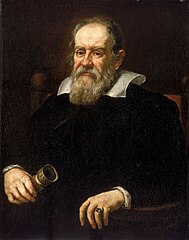Home: Classical Mechanics, 2012
Purpose of the course
This is an advanced course on classical mechanics. The purpose of this course is to introduce the formal structure of mechanics such as variational methods, phase space flows and the techniques needed for further developments beyond classical few-body physics.
Many students are expected to know most of this material. They can skip the drudgery of sitting through a course by opting to take a drop test. Please ask the course coordinator about how to register for this test.
Prerequisites
Pre-requisites for this course are two-fold. First, I will assume good working ability to solve for the equilibrium or motion of few body systems. Second, I will assume the ability to solve second order differential equations with constant coefficients. Both these abilities will be assumed at the undergraduate (B.Sc.) level. I will also assume a basic ability to use computers.
Ancillary skills
You will have to learn to use Mathematica. Here is a quick tutorial introduction to Mathematica: download it and try it out. In order to do this you will need an account on the servers in the computer center.
Evaluation
Performance evaluation will be based on assignments and tests. Tests will be given in the middle and end of the semesters (dates on the calendar at the left), and regularly throughout the course.
Course outline
Space, time and relativity. Constraints and coordinates. Configuration space, phase space, Lagrangians, Hamiltonians and the principle of least action. Symplectic structures, canonical transformations and Poisson brackets. Pendulums, small oscillations. Phase space motion, singular points, stability. The Kepler problem, rockets and satellites. The rigid rotor. The Hamilton-Jacobi method. Integrability and action-angle variables. Variation of constants and perturbation theory. Parametric resonance and gaps in the rings of Saturn. Chaos and the KAM theorem. Continuum dynamics: elasticity and fluid dynamics.
Self test
This animation of Pioneer 11 spacecraft flying by Saturn in 1979 was developed by the team which founded Pixar and is available on YouTube. Watch it in full screen mode. Space flights and the motion of planets are wonderful laboratories for testing classical mechanics. Watch the video carefully. Experiment with how to freeze frames and make measurements of lengths on the frozen frame. On most installations of Windows and Linux software tools will be available for measurements. If you are unable to find or install them, then do not forget that stone age implements like a ruler can still be used today.
The test
Now answer the following questions as quantitatively as possible. For some of these you will have to do a fair amount of work. If you are able to answer about 40% of the questions, then you may not need to sit through this course, and should consider taking the drop test.
- The Pioneer 10 spacecraft is shown spinning around the axis of its antenna. Why does it need to spin, and why this axis?
- As the spacecraft moves around the solar system, passing planets must surely produce a torque. How is the direction of the spin axis stabilized?
- In the video the shape of Saturn seems distinctly ellipsoidal, whereas you would expect the planet to take a spherical shape under its own gravity. Look up the rotation period of Saturn and check whether the observed flattenning can be quantitatively understood. In other words, has Pixar taken artistic liberties?
- The rings of Saturn are made of small icebergs and rocks. Can you compute the orbits of one of these mountains, neglecting the gravitational effects of the other nearby mountains? Please do, and find out the time period of an orbit. Is the approximation of neglecting the gravitational interactions between mountains good for finding the orbital period?
- Why do all the mountains making up the ring orbit in one plane?
- The rings of Saturn seem to be in the equatorial plane of Saturn. Are there any forces that cause this to happen, or is it purely random? If there are such forces, then why does it not cause the earth's moon to lie in the equatorial plane?
- Why are there gaps in the rings of Saturn? Is it just random chance? If you put a ball in one of these gaps, what would its trajectory be? Would it be periodic? What multiple of the spin period of Saturn would it be?
Copyright: Sourendu Gupta; Last modified on 4 Dec, 2025.


